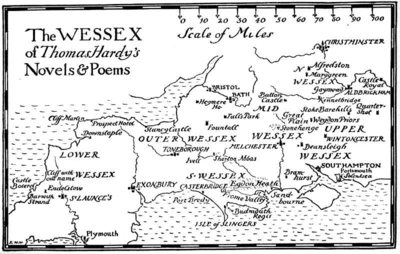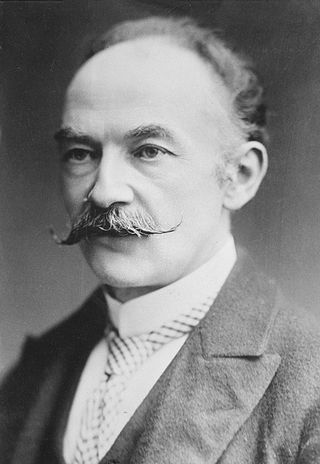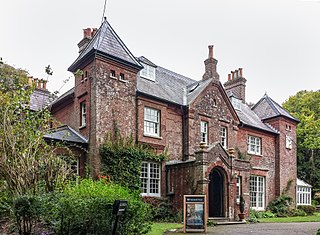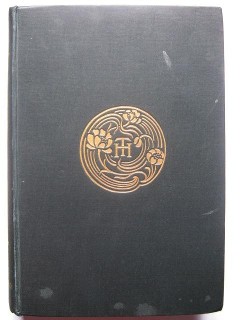| Wessex Name | Region of Wessex | Actual Name | Appearance in Hardy's Novels [12] [13] |
|---|
| Abbot's-Cernel | South Wessex | Cerne Abbas | Where Mrs. Dollery was driving to in the beginning of the novel. (W) |
| Abbotsea | South Wessex | Abbotsbury | |
| Aldbrickham | North Wessex | Reading | Where Jude and Sue lived together after Sue left Phillotson. It is also where Arabella used to work as a barmaid before she met Jude. (JtO) |
| Alfredston | North Wessex | Wantage | Jude Fawley becomes a mason's apprentice there. It is also where he works following his marriage to Arabella Donn. (JtO) |
| Anglebury | South Wessex | Wareham | Where Thomasin and Wildeve's marriage did not take place due to an invalid licence (RotN)
Where Ethelberta lodged in the beginning of the novel. (HoE) |
| Bramshurst | Upper Wessex | Lyndhurst | Tess and Angel fled to an unoccupied manor house in Bramshurst near the end of the novel. (TotD) |
| Budmouth | South Wessex | Weymouth | Where Frank Troy goes to gamble on horse races. (FftMC)
Eustacia Vye's hometown (RotN)
The working place of Owen. (DR)
On the way home from Budmouth, Dick and Fancy confessed to each other. (UtGT)
One of the cities where Farfrae did his business. (MoC)
The neighbouring village of Overcombe/(Sutton Poyntz), the principal location of TM, is sometimes called Budmouth-Regis in Hardy's novels, but that is more precisely Melcombe Regis, where George III popularised the watering place; Weymouth is the other side of the river.(TM) |
| Casterbridge | South Wessex | Dorchester | The principal location of The Mayor of Casterbridge. (MoC)
Where Fanny Robin dies at the poorhouse, and whose Corn Exchange is frequently visited by Bathsheba and Boldwood. (FftMC)
Where Rhoda and Farmer Lodge's son is hanged. The Withered Arm. (WT) [14]
When Tess's horse died while delivering goods from her home town to Casterbridge. (TotD) |
| Chalk Newton | South Wessex | Maiden Newton | Site of Flintcomb-Ash farm, where Tess worked after Angel left her. (TotD) |
| Chaseborough | South Wessex | Cranborne | Tess passed through Chaseborough on the way from home to Trantridge. (TotD) |
| Christminster | North Wessex | Oxford | Where Jude Fawley goes to become a scholar, and is advised to give up his career choice. Sue Bridehead works in a shop which produces religious artefacts there, meets her cousin, and is thrown from her lodgings. (JtO)
Cytherea and Owen's hometown. Although Christminster is technically not within the borders of Hardy's Wessex, as it is located to the north of the River Thames, he describes it in Jude the Obscure as "within hail of the Wessex border, and almost with the tip of one small toe within it". (DR) |
| Cliff Martin | Outer Wessex | Combe Martin | Combe Martin is actually in Devon, indicating that Hardy's boundaries are not necessarily linked to current county boundaries |
| Cresscombe | North Wessex | Letcombe Bassett | Arabella's hometown. (JtO) |
| Deansleigh | South Wessex | Romsey | Sir Ashley Mottisfont and his Lady Philipa reside at Deansleigh Park (probably a reference to Broadlands). [15] |
| Downstaple | Lower Wessex | Barnstaple | |
| Durnover | South Wessex | Fordington | |
| Endelstow | Off Wessex | St Juliot | The home of Elfride Swancourt and her Rector father (PoBE). In real life this was where Thomas met Emma whom he later married. |
| Emminster | South Wessex | Beaminster [14] | The home of Angel Clare, and the site of Clare's father's vicarage. (TotD) |
| Evershead | South Wessex | Evershot | Where Tess met Alec for the first time after they parted, when Alec was preaching. (TotD) |
| Exonbury | Lower Wessex | Exeter | Where Grace went to after she found out Fitzpier's affair. (W) |
| Falls Park | Outer Wessex | Mells Park | |
| Flintcomb-Ash | | Dole's Ash Farm at Plush [16] | The "starve-acre" farm where Tess undertakes hard manual field work. (TotD) |
| Fountall | Outer Wessex | Wells | |
| Gaymead | North Wessex | Theale | (JtO and WT) |
| Havenpool | South Wessex | Poole | Newson landed here on his return from Newfoundland. (MoC) |
| Isle of Slingers | South Wessex | Isle of Portland | The principal location of the Well-Beloved. (WB) |
| Ivell | Outer Wessex | Yeovil | |
| Kennetbridge | North Wessex | Newbury | "A thriving town not more than a dozen miles south of Marygreen" (JtO) [17] between Melchester and Christminster. [18] The main road (A338) from Oxford to Salisbury runs past Fawley and through Hungerford, which may be Kennetbridge instead of Newbury, which is to the south-east of Fawley. |
| Kingsbere | South Wessex | Bere Regis | Here is situated the Church of the d'Urbervilles. After Tess' Father's death, the Durbeyfield family take refuge outside the chapel. (TotD) |
| Knollsea | South Wessex | Swanage | Where Lord Mountclere lived. (HoE) |
| Lulwind Cove | South Wessex | Lulworth Cove | Where Sergeant Troy is thought to have drowned. (FftMC) |
| Lumsdon | North Wessex | Cumnor | It is there that Jude Fawley meets up with his old teacher Mr. Phillotson again. It is where Sue Bridehead starts to work as a teacher and promises herself in marriage to Mr. Phillotson. (JtO) |
| Marlott | South Wessex | Marnhull | Tess Durbeyfield is born and brought up there. After becoming pregnant by Alec D'Urberville she returns to the village and gives birth to a baby boy, who dies in infancy. (TotD) |
| Marygreen | North Wessex | Fawley | Drusilla Fawley runs a bakery there. It is the place where Sue Bridehead spent her childhood. Jude Fawley is brought there following the death of his father, and it is where he matures into a man. (JtO) |
| Melchester | Mid Wessex | Salisbury | This is the place where Jude goes to prepare himself for the ministry, and where Sue Bridehead is studying to become a teacher. The latter runs away from her school there, and later marries Mr. Phillotson in the town. (JtO)
Where Troy's military camp deployed. (FftMC)
Where Julian moved to after Ethelberta refuse his love. (HE)
Lord Helmsdale was the bishop of Melchester. (ToaT)
Tess and Angel pass through this city on their way to Stonehenge. (TotD) |
| Mellstock | South Wessex | Stinsford and Higher & Lower Bockhampton | Thomas Hardy's birthplace. Hardy's heart is also buried here, next to his first wife, Emma. Jude Fawley's father died there. (JtO)
Nearly all of Under the Greenwood Tree is set in Mellstock. (UtGT) |
| Middleton | South Wessex | Milton Abbas | Where Charmond lived. (W) |
| Middleton Abbey | South Wessex | Milton Abbey | Where Charmond lived. (W) |
| Narrowbourne | Outer Wessex | West Coker | Where the main character is a priest in A Tragedy of Two Ambitions a short story part of Life's Little Ironies. |
| Nuttlebury | South Wessex | Hazelbury Bryan | Tess passes through here on her way back home. (TotD) |
| Overcombe | South Wessex | Sutton Poyntz | The principal location of The Trumpet-Major.(TM)
One of the places from where the vans of carriers in and out of Casterbridge hailed. (MoC) [19] |
| Port Bredy | South Wessex | Bridport [14] | Where Lucetta and Farfrae secretly married. (MoC) |
| Po'sham | South Wessex | Portesham | The home of Captain Thomas Hardy, one of Lord Nelson's commanders at the Battle of Trafalgar, who lived at Portesham House. (TM) |
| Quartershot | Upper Wessex | Aldershot | An important military station near Stoke-Barehills. (JtO) |
| Sandbourne | Upper Wessex | Bournemouth [14] | Where Tess Durbeyfield lives with Alec d'Urberville, and where she murders him upon the return of her husband, Angel Clare. (TotD).
It is also where Sue Bridehead's freethinking friend was buried, and where she was the only mourner at his funeral. (JtO)
The principal location of The Hand of Ethelberta. (HoE) |
| Shaston | South Wessex | Shaftesbury | Jack Durbeyfield visits the doctor in Shaston and learns that he has a bad heart. (TotD) Mr. Phillotson moves there to run a school. Jude Fawley travels there to see Sue Bridehead, who, married to Mr. Phillotson, is working in the town, and they flee the place together. (JtO) |
| Sherton Abbas | South Wessex | Sherborne [14] | The major neighbouring town of the Hintocks, where The Woodlanders took place. (W) |
| Slingers | South Wessex | Isle of Portland | The principal location of The Well-Beloved. (WB) |
| Solentsea | Upper Wessex | Southsea | The setting of the short story "An Imaginative Woman." |
| Stancy Castle | Outer Wessex | Dunster Castle | The principal location of A Laodicean. (L) |
| Stoke Barehills | Upper Wessex | Basingstoke | Where Great Wessex Agricultural Show was held. (JtO) |
| Stourcastle | South Wessex | Sturminster Newton | Tess travelled through here. (TotD) |
| Street of Wells | South Wessex | Fortuneswell | The main street on Isle of Slingers, where The Well-Beloved mostly took place. (WB) |
| Toneborough | Outer Wessex | Taunton | |
| Trantridge | South Wessex | Pentridge | Site of the D'Urberville estate. (TotD) |
| Warborne | South Wessex | Wimborne | Nearest town and railway station to Welland. (ToaT) |
| Weatherbury | South Wessex | Puddletown [14] | Farms of Bathsheba and Boldwood, main setting for Far From the Madding Crowd (FftMC) |
| Weatherbury Farm | South Wessex | Waterston Manor | Bathsheba's farm, in Far From the Madding Crowd (FftMC) |
| Wellbridge | South Wessex | Wool | Where Tess told Angel her story after they married. (TotD) |
| Weydon-Priors | Upper Wessex | Weyhill | Where Michael Henchard sells his wife while he is drunk. (MoC) |
| Wintoncester | South Wessex | Winchester | Tess Durbeyfield is imprisoned and executed in this former capital of Wessex. (TotD) |
|

















